|
Edgar Wayburn | Rich Gordon | Cliff Lobaugh | Mark Hickok
Bill Mankin | Carolyn Carr
Edgar Wayburn
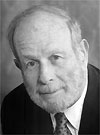 One could argue that the Sierra Club's organized effort to preserve Alaska's wildlands started in 1967, when Ed and Peggy Wayburn returned from their first of what was to become annual visits to the state. Ed Wayburn, then president of the Club, convinced its directors to make the protection of Alaska lands a high priority - in some years its top priority. An Alaska Chapter was started, and the first Alaska staff member, Jack Hession, was hired. One could argue that the Sierra Club's organized effort to preserve Alaska's wildlands started in 1967, when Ed and Peggy Wayburn returned from their first of what was to become annual visits to the state. Ed Wayburn, then president of the Club, convinced its directors to make the protection of Alaska lands a high priority - in some years its top priority. An Alaska Chapter was started, and the first Alaska staff member, Jack Hession, was hired.
In 1971, the board unanimously endorsed a resolution put forth by Wayburn to ask for the protection of 150 million acres of Alaska lands. And it was Wayburn who convinced Washington Sen. Henry "Scoop" Jackson (D) to introduce the amendment that withdrew lands for study and possible preservation. Wayburn continued to be ever-present in all aspects of the Alaska lands issue, whether it was lobbying Congress or overseeing the Club's grassroots efforts.
A resident of San Francisco, Wayburn, 94, maintains his leadership role as chairman of the Alaska Task Force, which works with the Alaska Chapter to advise the Club's board.
Rich Gordon
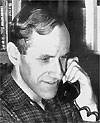 A wildlife biologist and ornithologist, Rich Gordon moved to Juneau in 1966 where he took a job as librarian for the Alaska Department of Fish and Game. He also helped found the Club's Alaska Chapter and the Alaska Wilderness Coalition. Gordon was an active participant in the drafting of H.R. 39, and in the late '70s he often visited Washington, D.C., to lobby and assist with the detailed proposals. A wildlife biologist and ornithologist, Rich Gordon moved to Juneau in 1966 where he took a job as librarian for the Alaska Department of Fish and Game. He also helped found the Club's Alaska Chapter and the Alaska Wilderness Coalition. Gordon was an active participant in the drafting of H.R. 39, and in the late '70s he often visited Washington, D.C., to lobby and assist with the detailed proposals.
He is currently researching the National Petroleum Reserve-Alaska, the northeast corner of which was leased by the Clinton administration in 1998, against the objections of the Sierra Club and other groups. (A legal challenge is pending in federal court.) He has drafted detailed recommendations for permanent protection of this 23-million-acre preserve.
Cliff Lobaugh
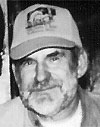 Cliff Lobaugh moved to Alaska in 1955 and eventually established a veterinary practice in Juneau. In addition to co-founding the Club's Alaska Chapter, he became active in the fight to halt logging on and protect Admiralty Island. He led the effort to see this 100-mile-long island become the national wilderness monument it is now. A deer hunter, he convinced local sporting groups to endorse no-logging status for Admiralty. Cliff Lobaugh moved to Alaska in 1955 and eventually established a veterinary practice in Juneau. In addition to co-founding the Club's Alaska Chapter, he became active in the fight to halt logging on and protect Admiralty Island. He led the effort to see this 100-mile-long island become the national wilderness monument it is now. A deer hunter, he convinced local sporting groups to endorse no-logging status for Admiralty.
Now retired, he regularly takes visitors and VIPs to his cabin on Admiralty's Mansfield Peninsula, where he puts them to work in his extensive garden and entertains them with stories around the wood stove. Bears have the run of this mini-sanctuary, and visitors know it, so Lobaugh gets a kick out of "woofing" them from behind a big Sitka spruce.
Because the brown bears on Admiralty Island have come under heavy pressure from trophy hunters in recent years, he'd like to see the island established as a sanctuary for them.
Mark Hickok
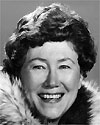 A Sierra Club member since 1940, Mark Hickok moved to Alaska from California in 1959 and was one of the founding members of the Sierra Club's Alaska Chapter. Some of the research on which lands should be protected took place in her small apartment. A Sierra Club member since 1940, Mark Hickok moved to Alaska from California in 1959 and was one of the founding members of the Sierra Club's Alaska Chapter. Some of the research on which lands should be protected took place in her small apartment.
"I had just one table in it at the time, but there would be a dozen people there all working on map boundaries, so we called it the Maps on the Floor Society," said Hickok. "We asked everyone to tell us which lands to protect - trappers, fishermen, homesteaders, guides, miners, archaeologists, a real cross-section of the 500,000 people living in the state."
Earlier, in 1969, Hickok co-founded the Alaska Wilderness Council for the purpose, among others, of establishing new state parks. During the 1960s and 1970s, the park system was expanded to roughly its current size, including the largest and most important units: Chugach, WoodRiver-Titchik, Denali and Kachemak Bay state parks.
Hickok and her husband David live in Anchorage.
Bill Mankin
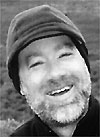 Bill Mankin, a Georgia native, first learned of the Alaska lands struggle in a 1977 issue of National Geographic. Though he'd never been to Alaska, he became a full-time volunteer organizer, working parttime to support himself. Bill Mankin, a Georgia native, first learned of the Alaska lands struggle in a 1977 issue of National Geographic. Though he'd never been to Alaska, he became a full-time volunteer organizer, working parttime to support himself.
"There was nothing on a grander scale, that was more diverse or wilder than anything I'd known about in my life," said Mankin. "I took responsibility to get the Georgia delegation on board, and by god I was not going to fail."
Mankin drove all over Georgia to coordinate grassroots lobbying efforts with chapter members, and lobbied his delegation in Washington, D.C., and in their districts. He helped establish phone banks, alerted the media to key events and votes, and wrote letters and op-ed pieces. He built a Georgians for Alaska coalition with more than 100 groups and appeared on talk shows, including one heated radio debate with Alaska Rep. Don Young (R).
"It was a chance for me to say to those who represented me, 'You have a vote, we own the land, and this is what I want,' " Mankin said.
In the end, five members of the Georgia delegation, including Newt Gingrich, co-sponsored the Alaska Lands Act, and when the bill reached the House, eight of the state's 10 representatives voted for it.
Mankin's work on the bill led him to pursue a career in environmental activism; he currently heads the Global Forest Policy Project in Washington, D.C.
He visited Alaska for the first time in the summer of 2000.
Carolyn Carr
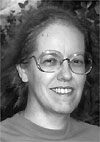 An expert in river systems management, Carolyn Carr lived in Alabama during the fight to save Alaska lands and was instrumental in rallying her state's activists for the nearest field hearing - in Atlanta, Ga. She remembers the testimony of one youngster who summed up the case for the Alaska Lands Act, saying, "I want to enjoy wildlife, not remember it." An expert in river systems management, Carolyn Carr lived in Alabama during the fight to save Alaska lands and was instrumental in rallying her state's activists for the nearest field hearing - in Atlanta, Ga. She remembers the testimony of one youngster who summed up the case for the Alaska Lands Act, saying, "I want to enjoy wildlife, not remember it."
Carr held lobbying and training workshops for Florida conservationists. She regularly traveled to Washington, D.C., to lobby her delegation and other Congress members, and worked extensively with the media.
"I'll never forget one television talk show where I was wedged in between a revival preacher and a belly dancer," she said.
Still active in the Club, Carr keeps an eye on Alaska from her home in Auburn, Ala. "When the Club recruited me to help in 1977, they told me it would be for nine months. Twenty years later I'm still involved."
Up to Top
|